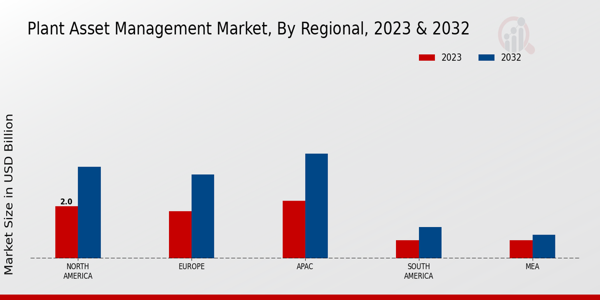Rising Complexity of Asset Management
The Plant Asset Management Market is facing a rising complexity in asset management due to the increasing number of assets and their interdependencies. As organizations expand and diversify their operations, managing a larger and more complex asset portfolio becomes a challenge. This complexity necessitates the adoption of advanced asset management solutions that can provide comprehensive visibility and control over assets. Market data suggests that organizations that implement integrated asset management systems can improve asset visibility by up to 40%. Consequently, the demand for sophisticated plant asset management solutions is likely to grow, as businesses seek to navigate the intricacies of modern asset management and ensure optimal performance.
Increased Focus on Operational Efficiency
The Plant Asset Management Market is experiencing a heightened emphasis on operational efficiency. Organizations are increasingly recognizing the need to optimize asset performance to reduce costs and enhance productivity. This trend is driven by the necessity to maintain competitiveness in a rapidly evolving market landscape. According to recent data, companies that implement effective asset management strategies can achieve up to a 20% reduction in operational costs. This focus on efficiency not only improves the bottom line but also extends the lifecycle of assets, thereby contributing to sustainability goals. As a result, the demand for advanced plant asset management solutions is likely to grow, as businesses seek to leverage technology to streamline operations and maximize asset utilization.
Regulatory Compliance and Safety Standards
The Plant Asset Management Market is significantly influenced by the increasing regulatory compliance requirements and safety standards across various sectors. Organizations are compelled to adhere to stringent regulations that govern asset management practices, particularly in industries such as oil and gas, manufacturing, and utilities. Compliance with these regulations not only mitigates risks but also enhances operational integrity. The market data indicates that companies investing in compliance-driven asset management solutions can reduce incidents of non-compliance by as much as 30%. This trend underscores the importance of integrating compliance features into plant asset management systems, thereby driving demand for innovative solutions that ensure adherence to safety and regulatory standards.
Growing Demand for Sustainability Initiatives
The Plant Asset Management Market is increasingly driven by the growing demand for sustainability initiatives. Organizations are under pressure to adopt environmentally friendly practices, which includes optimizing asset management to minimize waste and energy consumption. The integration of sustainability into asset management strategies not only aligns with corporate social responsibility goals but also enhances brand reputation. Recent studies indicate that companies focusing on sustainable asset management can achieve a 15% reduction in energy costs. This trend is prompting businesses to seek plant asset management solutions that incorporate sustainability metrics, thereby fostering a more responsible approach to asset management and contributing to long-term environmental goals.
Technological Advancements in Asset Management
The Plant Asset Management Market is witnessing a surge in technological advancements that are reshaping how organizations manage their assets. Innovations such as the Internet of Things (IoT), artificial intelligence (AI), and machine learning are being integrated into asset management systems, enabling real-time monitoring and predictive maintenance. These technologies facilitate data-driven decision-making, which can lead to improved asset reliability and reduced downtime. Market analysis suggests that the adoption of these advanced technologies could enhance asset performance by up to 25%. As organizations strive to harness the power of technology, the demand for sophisticated plant asset management solutions is expected to rise, reflecting a shift towards more intelligent and automated asset management practices.


















Leave a Comment